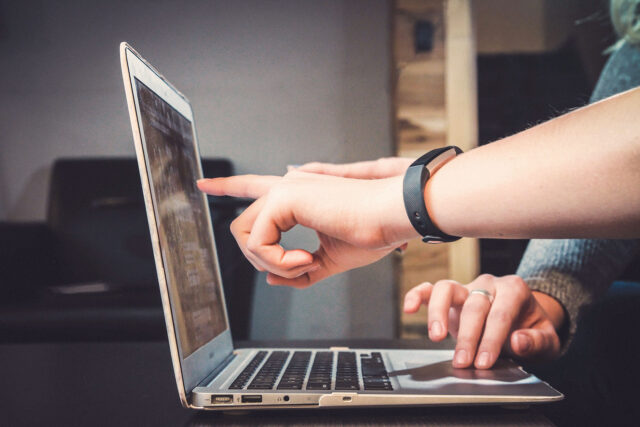Save your sanity and protect your personal data. Guard your money, your accounts and your home. Improve your personal cybersecurity by following these steps!
When you hear the term “cybersecurity”, you probably think about governments and large companies. Governments and corporations handle sensitive information from thousands of people. They hire cybersecurity professionals to keep hackers at bay.
But a regular user is also susceptible to malicious attacks, not only to personal and financial information but to material assets as well.
How can you improve your personal cybersecurity?
1) Update your operating system
Hackers constantly search for ways to gain access to computers, networks and databases. One way they gain access is by finding bugs in your operating system. The attackers then use bugs to create exploits and viruses.
Operating system developers (Windows, Apple and Linux) are in a never-ending battle to fix bugs. Meanwhile, hackers continue their battle to find new bugs. Imagine an “arms race” between developers and hackers, always trying to outwit the other.
The developers will never fix all the bugs in their code. But you can keep as safe as possible by updating your computer with their most recent patches.
2) Install an anti-malware program
Symantec reports that more than one million computer virus threats were released EVERY DAY last year.
An anti-malware program will protect your computer against these threats, like trackers, ransomware and other unwanted programs that could compromise your privacy.
Install an anti-virus / anti-malware program and keep it updated. To get started, try Malwarebytes Free.
3) Upgrade your browser
Still using Edge or Google Chrome? Switch to a privacy-focused browser like Firefox, Vivaldi or Brave. These browsers attempt to block trackers, third-party cookies and malware by default.
Want to go hardcore? Consider an extra layer of protection by running an ad and resource blocker. AdBlock Plus and uBlock Origin offer browser extensions. With a resource blocking extension, your computer will not connect to the servers that send malicious scripts and distracting ads.
4) Protect your WiFi
Your home WiFi connects your devices and transfers your data. Make sure the network is secure.
Most WiFi routers have default admin passwords. Improve security by changing the default username and password. Enable WiFi Protected Access and WPA2 encryption. Rename your home WiFi network. Check for firmware updates to your WiFi router.
5) Review devices on your home network
Almost every electronic device we buy wants to connect to the internet.
Security systems, cameras, cell phones, garage doors, front doors, sprinkler systems, smart locks, door bells, lights, so-called smart TVs… They all want to connect to the internet.
But how secure are these devices?
The reality is that any device connected to your home WiFi network could open your systems to intruders.
6) Separate your networks
Use separate networks for computers and internet-connected (IoT) devices.
Most newer routers offer a separate, guest WiFi network. Put your IoT devices such as cameras, door bells, smart TVs and baby monitors on this guest network.
The devices on your guest network will only be able to access the internet and not your internal computers.
7) Create strong passwords
An attacker can crack weak passwords within minutes. So create strong passwords by using regular words mixed with numbers and special characters.
8) Use a password manager
Use a password manager to keep your passwords in an encrypted database. A good password manager will also offer to generate strong passwords. We recommend Bitwarden.
9) Protect your phone
You may have more personal information on your phone than you realize. Did you install your bank app? What about stock trading and health apps? What about email and texts? Your email and text messages no doubt link to your financial accounts.
What would happen if an unauthorized party gained access to your phone?
Don’t rely on biometrics, fingerprints and face unlock. Make sure your phone has a screen lock with a strong password or pattern. Set your phone to automatically erase if someone attempts to unlock it too many times.
10) Install a security system
Your information security is only as good as the security of your home. If someone breaks into your home and gains physical access to your devices, your important personal data can be compromised as well.
Prevent and mitigate break-ins with a good security system.
A security system doesn’t have to be expensive. Avoid the monthly fees and find one you can manage yourself, with your own equipment.
Think about adding security cameras. Most cameras now come with motion sensors, night vision, weatherproofing and WiFi. You can easily review any suspicious activity around your house, on your phone, computer or even your TV.
More ideas to improve your security
- Compartmentalize your data
- Hide your home wireless network
- Improve outdoor lighting
- Reinforce windows with window security film
- Secure windows and pet doors
Conclusion
Cybersecurity isn’t just for governments and large corporations. Hackers also target the personal and financial information of everyday individuals. Yes, even you.
But you don’t have to hire a cybersecurity consultant to protect your data. Improve your personal cybersecurity with the steps in this post.
Update your operating system and protect your smart phone. Install and update your anti-virus. Follow guidelines for strong passwords. Review your home network security. Use strong passwords and install a password manager. Make sure your home is physically secure.
Want to learn more? Keep reading about the latest malware and cybersecurity threats.







